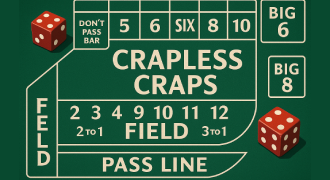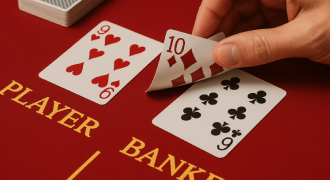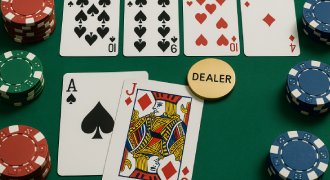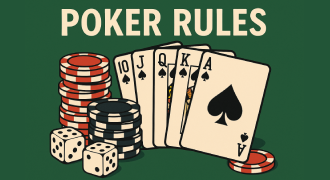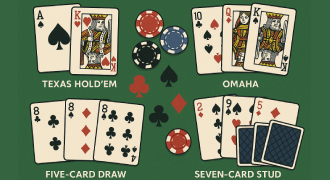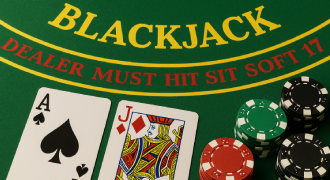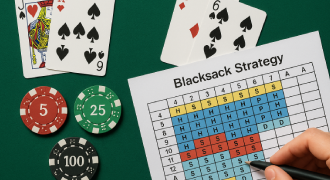Master Blackjack Strategy – Winning Tips and Techniques
Blackjack is one of the most popular and enduring card games in casinos worldwide, blending skill, strategy, and chance in equal measure. Players compete against the dealer, aiming to reach a total of 21 without going over, while using probabilities to guide decisions. Mastering the game involves understanding card values, dealer rules, and the subtle nuances that can shift the odds in your favor. A well-structured Blackjack strategy guide can help transform casual play into a calculated, disciplined approach that maximizes your winning potential.
Blackjack Strategy Basics: What It Is and Why It Matters
Blackjack is a decision engine camouflaged as a card game, and your goal is to minimize house edge through repeatable, data-driven actions. In practice, basic blackjack strategy converts every player total and dealer up card into a single best move with the highest expected value. When you apply a consistent Blackjack strategy, you reduce noise, increase hand quality, and create a scalable pathway to long-run profit. The best Blackjack strategy starts with game selection: prefer 3:2 payouts, dealer stands on Soft 17, and fewer decks where available.
Core levers that move the edge
- Rules audit: 3:2 payout, S17, double after split, resplit Aces.
- Penetration: deeper shoe cut increases information density.
- Seat discipline: avoid tilt, maintain decision cadence.
- Table speed: more hands per hour only if your edge is positive.
Defining Blackjack Terms
Precision vocabulary accelerates execution. A Hard hand contains no Ace valued as 11; a Soft hand contains an Ace counted as 11 without busting. Penetration measures how much of the shoe is dealt before a shuffle, while Blackjack strategy chart true count normalizes running count by decks remaining. EV (Expected Value) quantifies long-term profit per unit bet, and variance captures the short-term volatility you must budget for.
|
Term |
Definition |
Why It Matters |
|
Hard Total |
Hand with Ace counted as 1 or no Ace |
Drives conservative lines under pressure |
|
Soft Total |
Hand with Ace counted as 11 |
Enables aggressive doubles without bust risk |
|
Penetration |
% of shoe dealt pre-shuffle |
Higher penetration → stronger signals |
|
True Count |
Running count ÷ decks remaining |
Normalizes decisions across shoe sizes |
|
EV |
Long-run value per bet |
Aligns choices with optimal play |
These definitions serve as a compact play guide that keeps your team—yes, even a “team of one”—using the same operational language. With aligned terms, you’ll move faster from analysis to Blackjack strategy action.
Using Blackjack Strategy Charts Like a Pro
A Blackjack chart strategy is your on-table command center. Treat it as a living Blackjack strategy table that maps each player total against every dealer upcard to a single instruction: Hit, Stand, Double, or Split. Decoding it takes seconds; mastering it means applying the same directive regardless of table chatter or recent outcomes. For rapid chart usage, cluster decisions by hand type—Pairs, Soft totals, Hard totals—and rehearse the high-frequency cells first.
|
Player Hand |
Dealer 2–6 |
Dealer 7–A |
Action Rationale |
|
9 |
3–6: Double |
Else: Hit |
Leverage positive EV spots |
|
10 |
2–9: Double |
10–A: Hit |
Avoid dominated doubles |
|
12 |
4–6: Stand |
2–3,7–A: Hit |
Reduce bust exposure |
|
A,6 (Soft 17) |
3–6: Double |
Else: Hit |
Upside without bust risk |
|
8,8 |
Split all |
Split vs 7–A |
Reset bad base totals |
Memorize in slices, not all at once. Start with common, high-impact nodes, then expand coverage until your execution looks like clockwork.
Counting Cards Online: Is It Legal or Useful?
Counting uses public information and mental arithmetic; the method itself is legal in many jurisdictions, but casinos can bar advantage players who exploit it. In RNG-based online games with continuous-shuffle logic, counting has negligible value because the deck state effectively resets on every hand.
Live-Dealer tables with real shoes sometimes allow informational drift, but latency, limited penetration, and table policies compress edge capture. There is no Blackjack perfect strategy for RNG rooms; focus on rules selection, execution speed, and disciplined risk gates instead.
Managing Your Blackjack Bankroll Wisely
Bankroll is your oxygen supply—treat it with CFO rigor. Define loss limits, win locks, and the stake ladder before the first hand. A coherent strategy Blackjack betting aligns bet sizing with edge signals and variance tolerance, while betting strategy without rules becomes reactive and fragile. For a linear, low-friction ramp, test Blackjack betting strategy 1-2-3-5 across sessions and audit drawdowns versus expected volatility.
|
Bankroll (Units) |
Base Bet (Units) |
Stop-Loss (Units) |
Session Cap (Hands) |
|
100 |
1 |
30 |
200 |
|
200 |
1 |
40 |
250 |
|
300 |
2 |
60 |
300 |
Set alerts around risk control thresholds and de-escalate when variance runs hot. Keep records per session: base stake, max spread, true-count windows, and deviations used.
Understanding Soft vs. Hard Hands in Strategy
Soft totals grant flexibility because you can hit without immediate bust risk; hard totals demand tighter governance. With Soft 18 (A,7), you usually Stand versus 2,7,8; Double versus 3–6; Hit versus 9–A when rules allow. Hard 16 requires surgical moves: Stand versus 6 when surrender isn’t available, but Hit versus high upcards to avoid a dominated stand. Translate these into betting strategy Blackjack flashcards and rehearse until execution feels automatic.
Soft vs. Hard Decision Hints
- Soft hands: favor doubles in dealer weakness bands (3–6).
- Hard hands: prioritize survival lines against 9–A.
- Pairs: Splitting converts bad bases (e.g., 8,8) into two competitive hands.
- Always align with Blackjack basic strategy before adding deviations.
Advanced Tactics: Hi-Lo Count, Wonging, and Beyond
When table rules and penetration justify it, step up to advanced Blackjack strategy. The Hi-Lo system tags 2–6 as +1, 7–9 as 0, and 10–A as −1; you convert running count to true count by decks remaining to calibrate bets and deviations. Wonging—entering only when the shoe is favorable—reduces negative-EV exposure and boosts hourly ROI when allowed. Integrate these tools only after your baseline strategy Blackjack is airtight.
|
Rank |
Value |
|
2–6 |
+1 |
|
7–9 |
0 |
|
10–A |
−1 |
Keep your table presence low-noise: steady cadence, minimal theatrics, and consistent chip behavior. Build a deviation checklist and deploy only the top five with the highest EV lift.
When to Double Down and When to Hold Back
Doubling is a leverage event; misuse burns capital fast. Double hard 10 versus 2–9 and hard 11 versus 2–10; avoid doubling against an Ace unless specific rules tilt EV. For soft totals, double A,2–A,7 versus 3–6 depending on the chart and table rules. Anchor decisions to Blackjack basic strategy, then layer count-based deviations only when your data signal clears a predefined threshold.
Execution checklist
- Pre-hand: confirm dealer rules (S17/H17), DAS, surrender.
- On signal: verify upcard band and your total class (hard/soft/pair).
- Post-hand: log outcome, spot streak bias, maintain base cadence.
- De-escalate after two failed doubles in marginal bands.
Top Strategic Errors to Avoid at the Tables
Most Blackjack betting strategy leaks come from process slippage, not knowledge gaps. Chasing losses by increasing spread outside plan ruins EV discipline and inflates variance. Deviating from charts due to “gut feel” multiplies small edges into negative outcomes. Sitting in poor-rule games to “warm up” burns hourly value you never recover.
Common Errors
- Ignoring table rules audit before buying in
- Overriding charts due to recent outcomes
- Spreading bets without a defined edge signal
- Leaving logs blank, preventing post-session learnings
Tighten the loop: plan, execute, measure, iterate. That cadence turns lessons into winning tactics.
Blackjack Tactics for Live Casino Dealers
Live Casino Dealers optimize game flow, clarity, and fairness—three levers that shape player experience and risk. Maintain consistent pace, clear announce totals, and apply burn and cut procedures exactly as configured by the pit. Standardize Blackjack strategy shuffle mechanics and deck presentation to minimize disputes and reduce game latency. Track table KPIs—hands per hour, error rate, and dispute count—to keep operations clean and auditable.
Dealer Ops Best Practices
- Announce actions and outcomes at a steady volume.
- Display hole-card checks visibly where policy allows.
- Keep discard tray orderly for surveillance review.
- Align with floor calls instantly to prevent escalations.
Can You Apply Strategy in Online Blackjack Effectively?
Yes, with constraints. In RNG rooms, treat the game as stateless and lean entirely on rules selection, session caps, and decision precision. In Live-Dealer, you can port chart-driven lines and sometimes leverage shoe dynamics, though penetration and seat availability often limit upside. For skill rehearsal, a Blackjack strategy trainer accelerates memory, builds speed under time pressure, and flags errors before they cost money.
Expert Tips for Mastering Online Blackjack Strategy
Ship repeatable performance, not hero plays. Pre-select two rule sets you’ll play and two you’ll skip; this reduces decision fatigue. Convert your chart to a pocket-sized play guide and rehearse 5 minutes before every session. Run timed drills to hit 100% accuracy across the 20 most common cells, then scale to full-map Blackjack strategy coverage.
- Use spaced repetition and micro-tests to lock patterns.
- Track bet sizing against true count or rule quality tiers.
- Build a tiny postmortem after each session; assign one improvement.
- Keep a separate tab for deviations and revisit quarterly.
Final Thoughts: Mastery Comes With Practice
Mastery is boring in the best way: same inputs, same outputs, sustainable ROI. Anchor every decision to your charts and rules audit, expand only when the numbers justify it, and avoid noise. With a measured Blackjack strategy, variance becomes a line item, not a lifestyle. Keep iterating, and your edge compiles over time.
FAQ
What’s the best beginner strategy for Blackjack?
Start with strategy Blackjack basic for your exact ruleset and practice until every action is automatic.
Is using basic strategy enough to win?
It minimizes house edge; to gain advantage you need superior rules, promotions, or additional signals beyond charts.
Does card counting work in online Blackjack rooms?
In RNG games, no; in Live-Dealer, limited value may exist but depends on penetration and policies.
How can strategy charts boost my odds?
They translate millions of simulations into one action per spot, cutting costly errors fast.
Are there specific strategies for live Blackjack?
Yes—strict chart adherence, table selection, disciplined spreads, and error-free execution under pressure.
Should I prefer single-deck or multi-deck Blackjack games?
Prefer single-deck with strong rules, but only when payouts and dealer policies actually improve EV.


